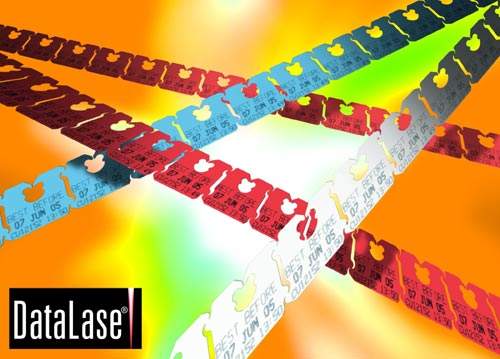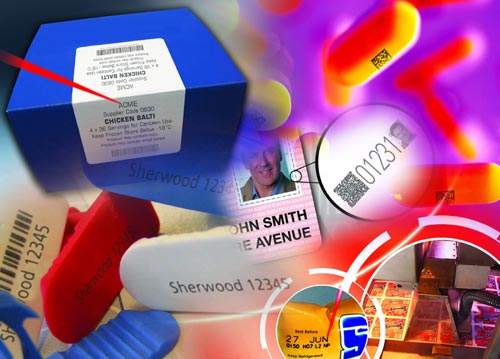In July 2005, George Weston Foods, an Australian food manufacturer, opted for Sherwood Technology’s DataLase™ masterbatch colour change technology to code the plastic bread bag closures supplied by Kwik Lok Australia.
Data on cost, freshness and other information is printed on the bread bag closures that are used to seal the products. Previously the data on the bread bag closures was printed using a thermal transfer printer supplied by Markem. The information on the closures became illegible with time and usage thereby reducing value to the customers.
George Weston supplies bread to 75% of Australian households. It recognised the increasing demand for sophisticated labelling by consumers and approached Kwik Lok, Unimark and Sherwood Technology for a suitable code solution.
DATALASE MASTERBATCH TECHNOLOGY
George Weston installed a number of SmartLase® 110 laser coders supplied by Unimark that are used in conjunction with the Datalase technology.
George Weston applies Datalase – a non-toxic inorganic additive directly to Kwik Lok bag closures. The company uses the laser coders to activate the Datalase additive that undergoes chemical changes after absorbing the light energy.
The additive changes colour on the plastic closure and results in a stable and high contrast image without ablation, which provides George Weston with the desired quality in labelling.
George Weston has the option to use the Datalase technology as an ink, coating or concentrate that can be applied by a separate printing or coating process in addition to direct application on the closures.
The small size and configuration of the laser coders facilitated installation into the production line. George Weston can make use of the flexibility of the laser coders to extend its usage to mark cartons and labels as well as plastics. The laser coders have a capacity of 400 characters per second on each coder.
IMPROVED CODING QUALITY AND REDUCED MAINTENANCE
George Weston realised that the use of laser coders reduced the possibility of production problems caused by the thermal printers’ high maintenance and the use of thermal ribbons at the point of coding.
Using DataLase masterbatch coding technology, George Weston eliminated the use of thermal transfer ribbons and has achieved higher productivity and lower maintenance. The food manufacturer has improved the speed of its production line due to the speed of the colour change technology in producing a code.
The low power CO2 lasers used by the DataLase have generated energy savings. The low maintenance has also resulted in reduced operating costs.
In addition, the lasers create less emissions and the Datalase Masterbatch is not toxic, contributing to environmental gains.
By combining DataLase technology and SmartLase coders, George Weston is able to provide better image resolution and marking on its bread closures giving clarity to customers. The Datalase technology enables George Weston to produce a durable code with contact free imaging that provides resistance to abrasion.
George Weston can make use of the compatibility of the Datalase masterbatch coding with most plastics and forming processes to widen its range of coding. In addition, the company can extend the technology to other substrates – paper and cardboard, flexible films, aluminium foils, rigid metals and plastics, glass and ceramics.
The food manufacturer is planning to adopt Datalase masterbatch technology in all its production lines.





